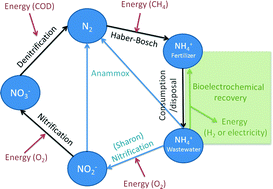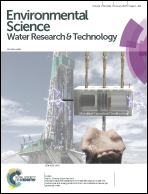Bioelectrochemical systems for nitrogen removal and recovery from wastewater
Abstract
Removal of nitrogen compounds from wastewater is essential to prevent pollution of receiving water bodies (i.e. eutrophication). Conventional nitrogen removal technologies are energy intensive, representing one of the major costs in wastewater treatment plants. For that reason, innovations in nitrogen removal from wastewater focus on the reduction of energy use. Bioelectrochemical systems (BESs) have gained attention as an alternative to treat wastewater while recovering energy and/or chemicals. The combination of electrodes and microorganisms has led to several methods to remove or recover nitrogen from wastewater via oxidation reactions, reduction reactions and/or transport across an ion exchange membrane. In this study, we give an overview of nitrogen removal and recovery mechanisms in BESs based on state-of-the-art research. Moreover, we show an economic and energy analysis of ammonium recovery in BESs and compare it with existing nitrogen removal technologies. We present an estimation of the conditions needed to achieve maximum nitrogen recovery in both a microbial fuel cell (MFC) and a microbial electrolysis cell (MEC). This analysis allows for a better understanding of the limitations and key factors to take into account for the design and operation of MFCs and MECs. Finally, we address the main challenges to overcome in order to scale up and put the technology in practice. Overall, the revenues from removal and recovery of nitrogen, together with the production of electricity in an MFC or hydrogen in an MEC, make ammonium recovery in BESs a promising concept.


 Please wait while we load your content...
Please wait while we load your content...